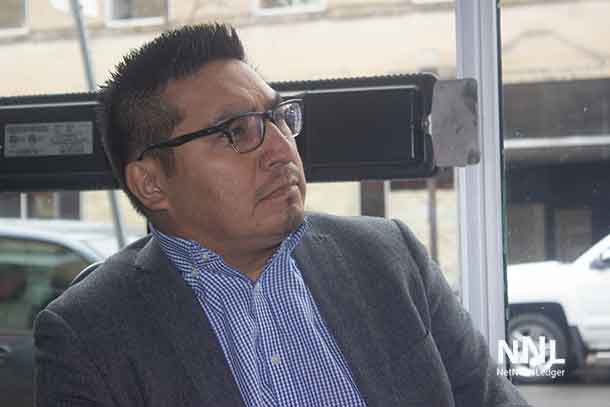|
Zhaagimaa Waabo, the Territorial Planning Unit (TPU) of Grand Council Treaty #3, in partnership with the Treaty #3 Women’s Council, Decolonizing Water, and author Fawn Wapioke, are proud to share the Treaty #3 Nibi Curriculum, a new resource for water education and understanding our living connection and relationship to water stemming from the Treaty #3 Nibi Declaration. The curriculum was developed to share teachings with learners of all ages and backgrounds, as well as provide structured lesson plans, discussion prompts, and activities that can help guide education both independently and in the classroom. Speaking on her inspiration behind the development of the curriculum, Fawn Wapioke shares “Having the honour of dedicating my time to the development of this resource for the TPU and the Anishinaabe Nation was a profound experience. My conviction in the sovereignty of our Nation, the significance of preserving and passing on our traditional knowledge, and the respect bestowed upon Nibi and our sacred duties were my primary motivations behind writing this curriculum. As an Anishinaabekwe, it was particularly important to me that our knowledge was translated with utmost respect for our protocols.” It is the hope that this resource will inspire greater action taken by individuals and groups with respect to protecting and caring for Nibi (water). Fawn continues, stating “This curriculum provides a structure for further study and exploration, with the intent to evolve over time. It initiates your journey to learn about Nibi – a sacred source of life.” By providing learners with a foundation of knowledge and a deeper understanding of the spirit of Nibi, they can grow their own personal relationships with Nibi, inspire others through their journey, and create more opportunity for awareness and action. The curriculum flows through 4 themes – Nationhood, Nibi Is Life, Nibi Is Sacred, and Relationship with Nibi. Each theme includes adaptable lesson plans, group discussions, and self-guided learning. Designed to create both private and shared experiences, it offers learners the opportunity to internally reflect or act on the lesson, as well as share their unique interpretations. Some examples of the activities found within the curriculum include mapping traditional territories, reflective writing, learning a traditional water song, and creating a Water Walk Skirt. |
 |
|
Speaking to the importance of passing down knowledge, Aimée Craft, a professor, researcher, and leader in Indigenous laws, treaties, and Nibi, expressed her support for the curriculum, “Sharing knowledge and teachings with future generations is vital to being able to understand our collective responsibility to water. This curriculum helps students and teachers of all ages learn about Nibi and take action to protect it.” Her words are echoed by many that were involved in the creation of this teaching tool, including Priscilla Simard, a teacher and esteemed advocate for Nibi. Priscilla shared her thoughts on the importance of this resource to youth, stating “The curriculum will share information to our young people today. It is our young people that must learn these teachings. They need to honor water and respect it, they have to be able to protect it and carry out the ceremonies that go along with it.” Priscilla has sat on the Gaagiigidoo Ikwewag, also known as the Women’s Council, of Treaty #3 and endorses the curriculum on behalf of the Council. “Water is life, we must take care of it and respect it, we must raise it as we would a child. It all goes back to the creation story; children are born in water – it is so important.” She continues to praise its importance for all of creation, “I am an advocate for Nibi, and I am also a teacher. I speak for those who can’t speak, especially our water beings, the animals that come from the water. They have given us life, what we need to live.” “You need to know who you are, where you’ve been, and where you’re going, and the curriculum is an attempt to do that” Priscilla says. In launching the Nibi Curriculum, it is important that acknowledgments are made to the Anishinaabe Knowledge Carriers that have shared and continue to share the teachings and stories of Nibi. All of the Elders and participants that were integral to the creation of this curriculum have contributed greatly to the ongoing efforts of the Nation to inspire continued advocacy for the Nibi surrounding and within us. The curriculum is available to download from the Territorial Planning Unit’s webpage, under resources, as well as made available on the Nibi Portal. The TPU encourages everyone to integrate it however they can into their work, education, and personal life, and hopes that they will encourage others to do the same. |
Home Indigenous Regional Indigenous Introducing the Treaty #3 Nibi Curriculum to Support Water Education & Advocacy...





